The motor launch tied up on the small-boat pier in Seeadler Harbor in New Guinea to disembark a dozen males from the ammunition service USS Mount Hood. The date was November 10, 1944. Led by the ship’s communications officer, Lieutenant Lester Hull Wallace, the group had a number of errands to run on shore earlier than returning to the ship. Wallace deliberate to take a few males with him to the fleet publish workplace to select up mail. Others have been headed to headquarters to acquire charts and manuals. Two had dental appointments and two have been on their method to the brig. The sailors have been simply splitting up when an amazing blast knocked them off their ft. Once they appeared out into the harbor, they have been surprised to comprehend that their ship was being wracked by explosion after explosion.
Seeadler Harbor was off the northeast coast of Manus Island, 250 miles north of mainland New Guinea. It was one of many most interesting anchorages within the Southwest Pacific Theater, measuring 15 miles lengthy and 4 extensive, with ample depth for capital ships. The military had taken the island from the Japanese in early March 1944 and inside days U.S. Navy Seabees had begun to construct a significant superior working base able to supplying and repairing the ships of Admiral William F. Halsey’s Third Fleet because it supported Basic Douglas MacArthur’s leap-frogging drive alongside New Guinea’s north coast to retake the Philippines. That very same month a survey ship marked out greater than 600 moorage websites all through the huge harbor. The Manus base grew over the summer season and have become dotted with lots of of buildings—largely Quonset huts used as barracks for hundreds of sailors and as warehouses for the huge quantities of materiel crucial to hold on the warfare.
On the morning of Friday, November 10, Mount Hood was one in all some 200-odd ships within the harbor. The vessels ran the gamut from patrol boats to escort carriers and likewise included touchdown ships, tanks (LSTs), destroyers, and civilian-crewed freighters. Mount Hood was anchored at berth 380, close to the harbor’s heart, 4 miles from the doorway and 2½ miles from land. It was the primary of eight AE class ammunition ships that had been transformed for the U.S. Navy, with a size of 460 ft, a displacement of 14,000 tons, and a cargo capability of seven,800 tons. Mount Hood’s keel was laid down in September 1943 and it started service as a cargo vessel named the SS Marco Polo. As soon as the navy took over, it transformed the ship into an ammunition service. Commissioned in July 1944, the vessel was renamed after the dormant volcano that gives Oregon with its highest level. Its captain was Commander Harold A. Turner.
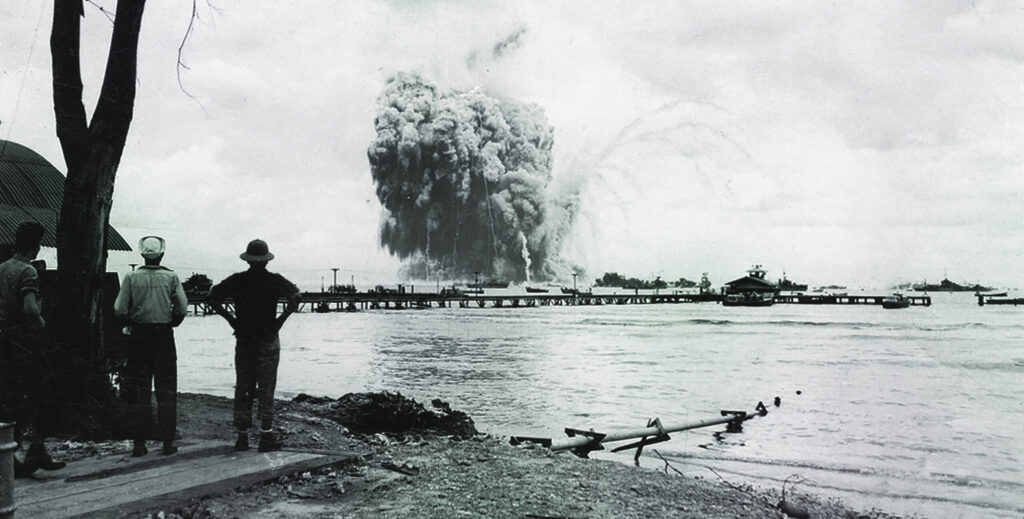
(Naval Historical past and Heritage Command)
Turner struggled to seek out certified seamen for his crew and plenty of of these he obtained have been uncooked recruits with no expertise at sea. After an unusually brief becoming out and a shakedown cruise within the Chesapeake Bay, Mount Hood stopped at Norfolk, Virginia, to load 5,000 tons of explosives and ammunition. On August 5, 1944, with its maintain stuffed, Mount Hood departed Norfolk sure for the Admiralty Islands by way of the Panama Canal. The ship reached its last vacation spot, Seeadler Harbor, on September 22. Its mission was two-fold: to dispense its cargo to different warships, and to tackle any unused munitions from homeward-bound vessels.
On November 10 Mount Hood was ringed by 9 touchdown ship, mechanized (LCM) boats and was the middle of a buzzing hive of loading and unloading exercise. The small-engine restore ship USS Mindanao was anchored off the ship’s port facet simply 350 yards away. USS Argonne, one other restore ship that additionally served as the duty drive commander’s flagship, was 1,100 yards off.
Wallace and his going-ashore celebration piled aboard the captain’s 40-foot gig and at 8:25 a.m. they shoved off towards the seaside. As he headed towards shore Wallace famous that aerial depth expenses have been being loaded aboard the Mount Hood from the touchdown craft moored alongside.
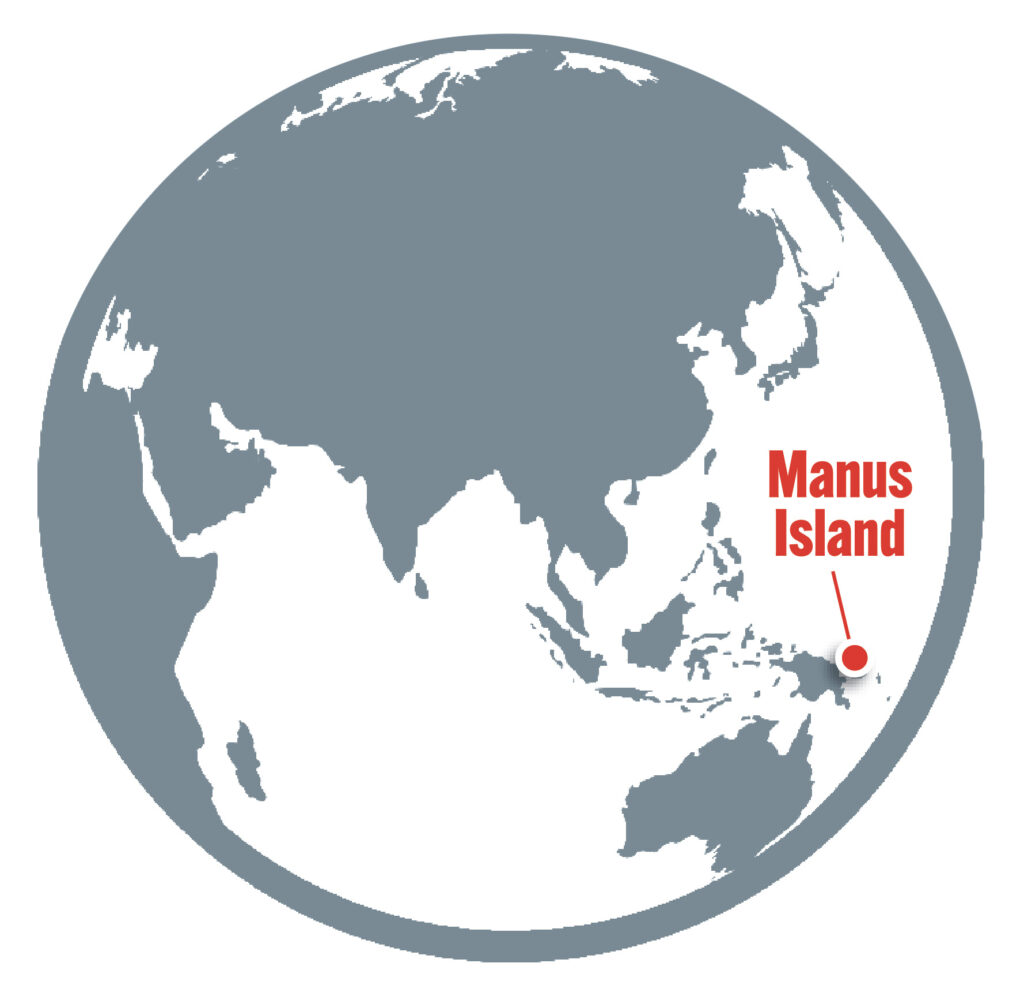
A lanky, bespectacled 29-year-old native of Georgia, Wallace had graduated from Atlanta Tech Excessive Faculty and earned his regulation diploma from George Washington College in Washington, D.C., in 1941. Afterward he married Mildred Virginia French and went straight into the service of the Bureau of Inner Income, working within the property and reward tax department—however not earlier than registering as an officer within the Naval Reserve. In 1942 the navy known as him up and assigned him a spot within the Bureau of Naval Personnel. After a yr there the navy despatched Wallace to its communications college at Harvard College, after which to the Sub Chaser Coaching Heart at Miami, Florida. In the summertime of 1944 the lieutenant was transferred to USS Mount Hood—his first at-sea deployment. He put his Ivy League coaching to good use when establishing the ship’s communications division.
Wallace and his crew landed on the pier and disembarked to hold out their numerous chores. Simply as they have been separating, one of many sailors loudly exclaimed, “Look!” The boat crew turned to see an eruption of smoke and hearth rising above Mount Hood. In seconds a robust explosive concussion threw them to the bottom. It took a full 12 seconds for the horrible sound of the exploding ship to succeed in them. Even from two miles away they may see darkish shapes being ejected from the explosion and curving excessive into the sky. The lieutenant reacted instantly. “Again to the boat!” he yelled. He advised the coxswain to make all velocity to return to the scene. It took greater than 1 / 4 of an hour for the motor launch to succeed in berth 380. They discovered no ship, no our bodies. “There was nothing however particles throughout,” Wallace later wrote. Mount Hood and her crew of 350 had merely vanished.
Wallace directed the boat to the closest vessel, the Mindanao. He was shocked by what he noticed—the port facet had been pummeled by flying metal that punched 33 irregularly formed holes into the hull, some as giant as three by 4 ft. He later discovered that everybody on the port deck—26 sailors—had been killed immediately by the blast. In all, 82 males died on Mindanao. There appeared nothing extra Wallace and his males might do, so the lieutenant had the launch head again to the pier to await additional orders. There he was advised to stay round and that he’d be required as a witness for an about-to-be-convened official board of inquiry. He didn’t know then that he was the one surviving officer from Mount Hood.
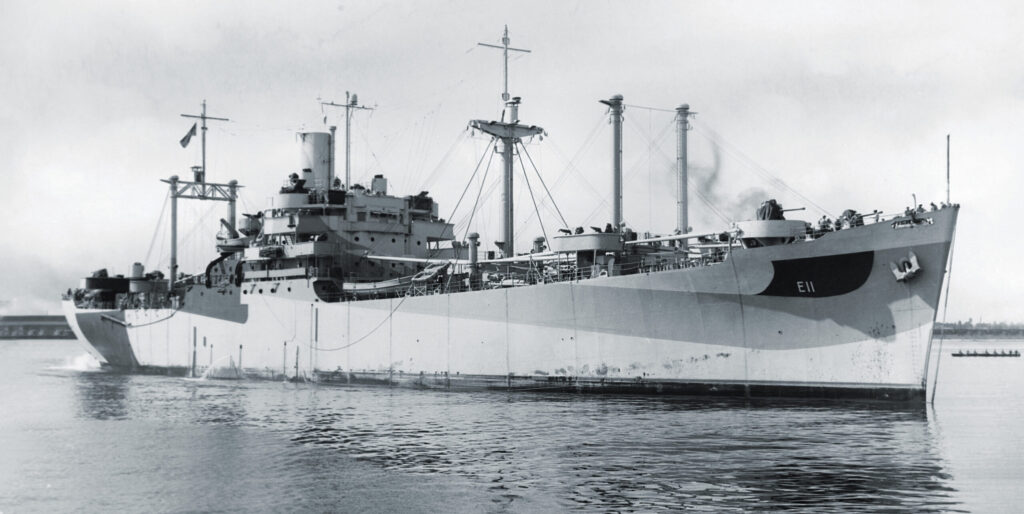
(Naval Historical past and Heritage Command)
Out within the harbor ships have been assessing the injury from the explosion. After the sky ceased raining metallic fragments, the crew of the Argonne counted 221 items of the Mount Hood strewn throughout the deck. Stated the ship’s captain, Commander T.H. Escott, “By the point we had recovered from the drive of the explosion, Mount Hood was utterly shrouded in a pall of dense black smoke. It was not attainable to see something price reporting.”
Ships so far as 2,200 yards distant sustained numerous levels of harm, amongst them the escort carriers USS Petrof Bay and Saginaw Bay, the destroyer USS Younger, 4 destroyer escorts, and a number of other cargo and restore vessels. Small boats like touchdown craft took the brunt of the blast. Many have been sunk and extra have been broken past restore. Many crewmen died. Thankfully, there have been no main fight ships within the harbor that morning.
When divers entered the harbor waters to examine Mount Hood’s wreckage, they discovered none to talk of—only some stray items of the hull, nothing greater than 16 by 10 ft. They have been astonished to see a trench within the sand 50 ft extensive and 300 ft lengthy that the explosion had excavated to a depth of 40 ft. USS Mount Hood had actually ceased to exist.
Inside days the navy organized a board of investigation to find the reason for a disaster that killed 432 males and wounded an extra 371 from surrounding ships. The members, headed by a captain and two commanders, have been to overview all of the details, research photos taken on the scene, and interview personnel who, ultimately, witnessed the occasions of November 10, 1944. The hearings occurred aboard the destroyer tender USS Sierra.
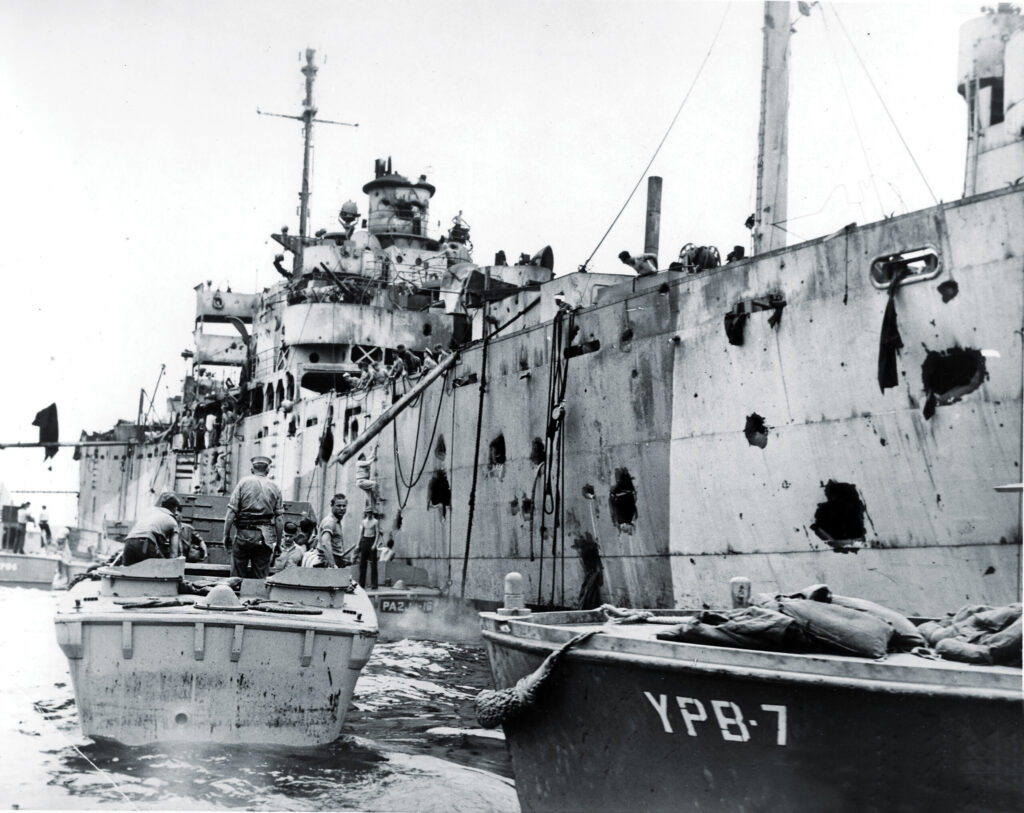
(Naval Historical past and Heritage Command)
The primary order of enterprise was to outline the scene at Seeadler Harbor and the position Mount Hood had performed in actions there. It was famous that the ship was “the first supply for the problem of all kinds of ammunition,” and was taking up munitions from homebound vessels. The board famous that the harbor had 4 delineated anchorages for ammunition ships within the harbor’s western portion. However they weren’t used. After shifting the ship’s allotted place twice, the harbormaster settled it into berth 380, within the typically placid waters on the harbor’s heart. That central location was extra handy for the touchdown craft and lighters that needed to carry the ammunition forwards and backwards. The ship was anchored in about 120 ft. On the time of the explosion Mount Hood was carrying about 3,800 tons of excessive explosives, together with “fairly a little bit of broken ammunition,” Lieutenant Wallace advised the board. “A few of it was corroded and I personally keep in mind seeing some pyrotechnics with dates way back to 1915.”
Seaman First Class Lawrence Gaschler advised the board that he ought to have been aboard Mount Hood that morning unloading side-by-side together with his fellow crewmates from the amphibious boat pool. However he had been chosen to pilot a ship that carried an officer from the escort service USS Ommaney Bay to a different ship within the harbor. “In my thoughts, we’d simply handed the Hood when it blew up,” he testified. “There was this brilliant flash and I might really feel the warmth, then only a second later the concussion hit us. It knocked the officer down and knocked me out. Once I got here to, particles was falling within the water round.”
Motor Machinist’s Mate Lew Cowden was aboard the destroyer escort USS Whitehurst. He recalled that “we have been headed towards the open sea when it exploded. They inform me we have been a lot nearer when taking up provides and went proper previous [Mount Hood] on our approach out. I had simply began up the ladder to the fantail when the blast pushed me again. I ran ahead and got here up on deck amidships. The air was filled with smoke and high quality mud. I used to be advised that we have been far sufficient away to keep away from injury from the blast and but close to sufficient that main particles blew over us.”
Not all eyewitness testimony was credible. Aviation ordnanceman Edward L. Ponichtera, who was engaged on the seaside close to the Mount Hood, asserted that he noticed a twin-engine Japanese bomber drop two bombs—“every a direct hit”—on the ship. “I clearly noticed the Rising Solar painted on the aircraft,” he mentioned. Carl Hughes, a sailor on the Liberty ship SS William H. McGuffey, averred that he noticed an enemy midget submarine broach the water close to Mount Hood and hearth two torpedoes.
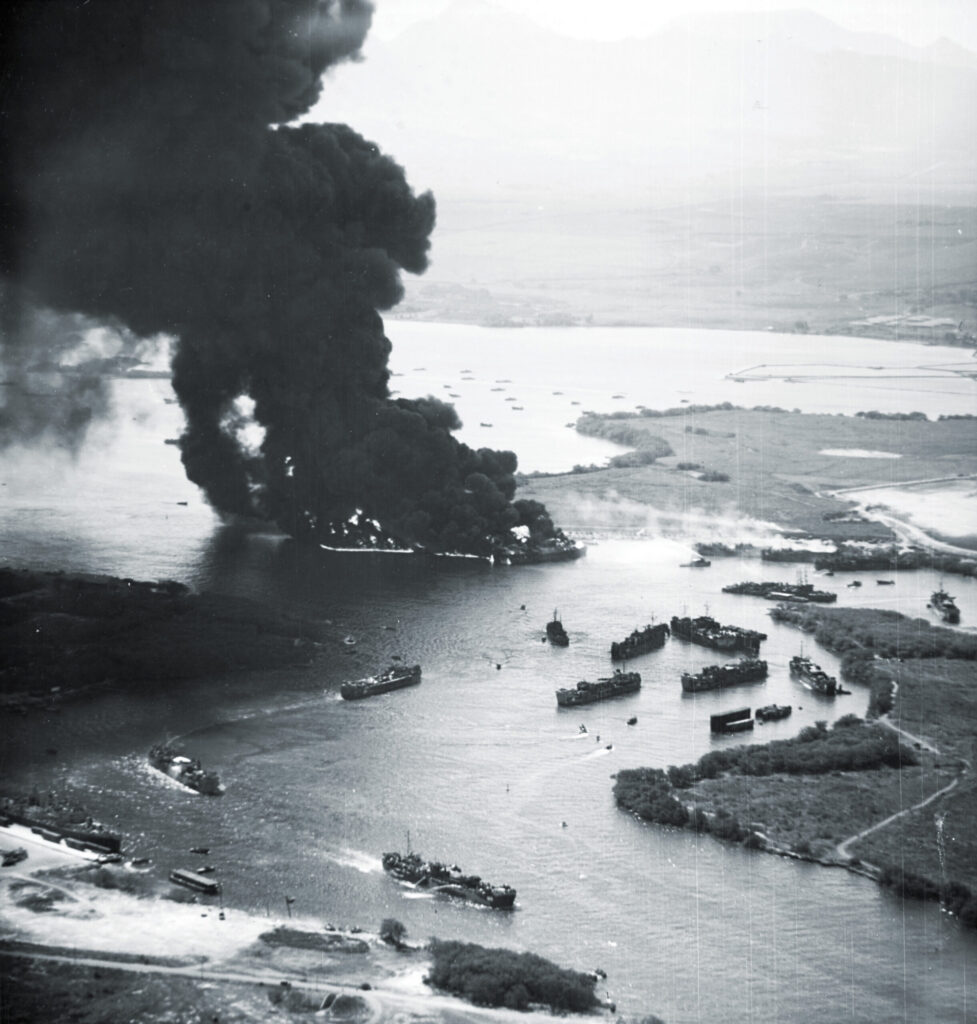
(Naval Historical past and Heritage Command)
With assist from the Mount Hood survivors on Wallace’s boat, the board’s investigators pieced collectively an accounting of the kinds of cargo aboard on the time of the explosion. Munitions included .30-caliber machine gun rounds, 14-inch shells for battleships, and every part in-between. There have been dozens of 100-pound bombs saved away within the holds, or within the case of the 1,000-pound blockbusters, saved in a small shack on the principle deck. Maintain #5 contained rocket our bodies and rocket motors, most of them broken. The full was practically 4,000 tons of munitions.
The investigators then moved over to evaluate Mount Hood’s crew and their position within the inferno. They felt the sailors had an total “lack of expertise” and, maybe much more essential, a “lack of management among the many twenty-two officers,” which led to poor self-discipline onboard. “This was mirrored within the tough and careless dealing with of ammunition,” the board famous.
In all, 133 witnesses gave testimony, supported by dozens of reveals. Wallace was twice known as to offer proof. It took the board a month to assemble all of its proof.
On December 14, 1944, the board issued its findings. “The next unsafe circumstances and practices have been revealed within the investigation: ammunition was being roughly dealt with in all components of the ship; boosters, fuzes and detonators have been stowed collectively in a single maintain in a fashion opposite to laws governing transportation of navy explosives; security laws for dealing with ammunition weren’t posted in conspicuous locations and there was a common lack of instruction to the crew in security measures; there was a scarcity of implementing the prohibitions of smoking; there was proof that ammunition was accepted on board which was undoubtedly faulty and may have been destroyed by dumping in deep water.”
The board’s last conclusion was that “The explosion was attributable to a drive or company throughout the USS Mount Hood itself.” Had Captain Turner survived he and his senior officers would have been held accountable. The board needed to admit that that they had no clear concept of the precise reason for the catastrophe—they may solely guess—which was irritating for the three members.
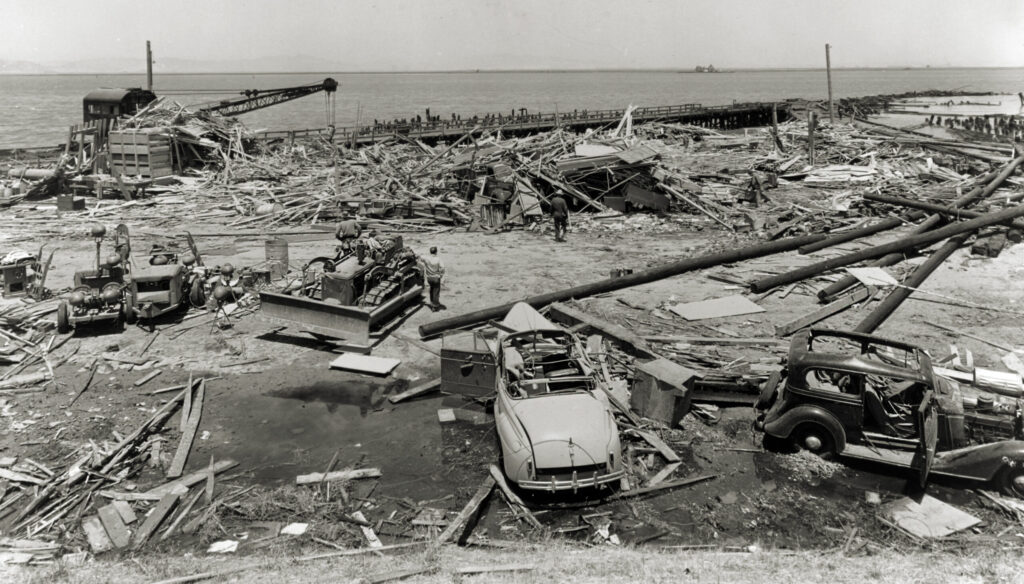
(Naval Historical past and Heritage Command)
Relating to the statements a couple of Japanese bomber or midget submarine, the board firmly said there was no proof that both of those assaults occurred, and so discounted the accounts.
In his endorsement of the report, Admiral Chester W. Nimitz, Commander of Pacific Ocean Areas and Commander of the U.S. Pacific Fleet, wrote, “The query of negligence shouldn’t be concerned however moderately that the technical errors made by the above named officers [Turner and others] have been errors in judgement ensuing from a eager want to fulfill crucial navy commitments and transfer on with the progress of the warfare.” The admiral famous, “The exigencies of warfare will all the time require the acceptance of sure operational hazards.”
Whereas engaged on its conclusions the board took word of two different incidents involving explosions on ammunition-carrying vessels, one in Could 1944 and the opposite in July.
On Could 21 an LST tied up at Pearl Harbor’s West Loch was loading mortar rounds for the upcoming invasion of the Mariana Islands when it was blown up after an errant shell fell right into a stack of munitions within the maintain. The ensuing conflagration rapidly unfold to different close by LSTs. Six of the craft have been sunk and 160 males killed.
And on July 17 a blast on the naval journal ammunition loading facility in Port Chicago, California, flipped and sank the freighter SS Quinault Victory and vaporized the Liberty ship SS E.A. Bryan. Three-hundred-twenty males died, two-thirds of them African American stevedores. Each ships have been tied up at a finger pier loading ammunition from a string of railway boxcars. The official discovering of details produced by the board of inquiry famous that “no intent, fault, negligence, or inefficiency of any individual within the naval service brought on the explosions.” Amongst shortcomings that led to the catastrophe, the board wrote, “The officers had little stevedoring expertise, none with dealing with enlisted personnel, and none with explosives.” They went on to explain the scenario with the enlisted males, and the racism within the conclusions was solely thinly veiled: “They have been unreliable, and lacked capability to grasp directions.” (When loading was ordered to renew weeks later, most of the sailors concerned refused, resulting in a mass court-martial. These convicted of mutiny and sentenced to arduous labor grew to become generally known as the Port Chicago 50 and gained their launch after the warfare and solely following a public outcry.)
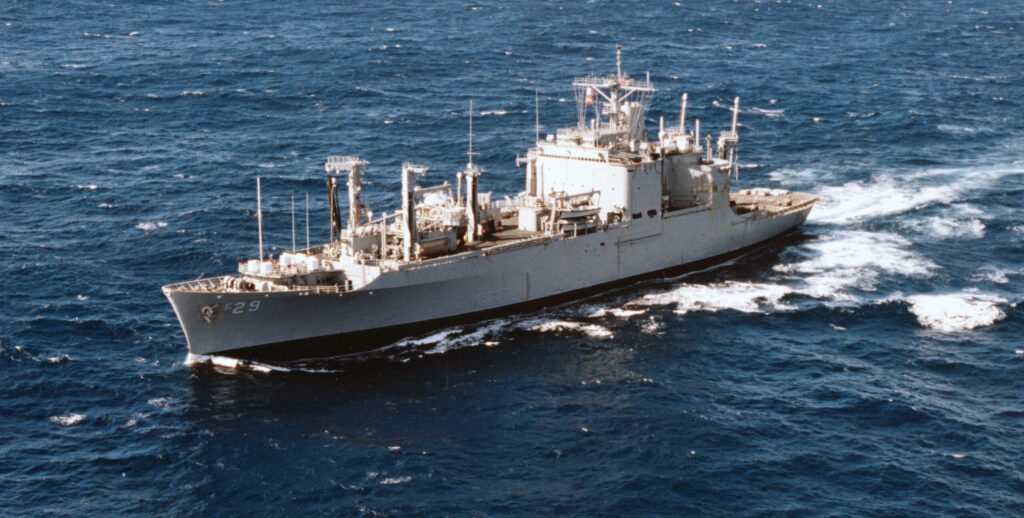
(U.S. Navy)
So, within the area of seven months three eerily related accidents wreaked havoc on the navy’s explosives provide strains. 9 ships have been misplaced and greater than 900 males died.
In March 1945 the navy’s Bureau of Ordnance issued a “round” letter to related instructions that emphasised how straightforward it was to blow up “bomb sort” ammunition unintentionally “by impacts not extreme sufficient to trigger even slight rupture to container partitions. Any concept that hazards as a consequence of ‘mere denting’ of containers have to be totally dispelled.” The letter went on to stipulate a collection of revised loading practices supposed to chop down on the dangers of explosions, specifically how harmful supplies must be dealt with. After tightening up the principles the navy suffered no additional cataclysms.
Following his testimony to the board of investigation, Lieutenant Wallace returned to Arlington, Virginia, to reunite together with his spouse and son. For his subsequent tour the navy despatched him for obligation within the communications unit of a service—precisely what he had sought all alongside. He spent the subsequent ten months on station within the Pacific Theater, the place he was promoted to commander. Wallace was discharged in late 1945 and when he returned residence, he reclaimed his outdated publish on the Bureau of Income (later renamed the Inner Income Service). He retired in 1974 and died in 2012 on the age of 97.
Mount Hood was not forgotten. In July 1968 a second ship named for the Oregon volcano was launched at Sparrows Level, Maryland. Designated AE-29, it was the fourth Kilauea-class ammunition ship to enter navy service. The second Mount Hood served in Vietnam in 1972, incomes a marketing campaign star, and served within the Gulf Warfare in 1991. The ship was decommissioned in August 1999 and was offered for scrap in September 2013.
